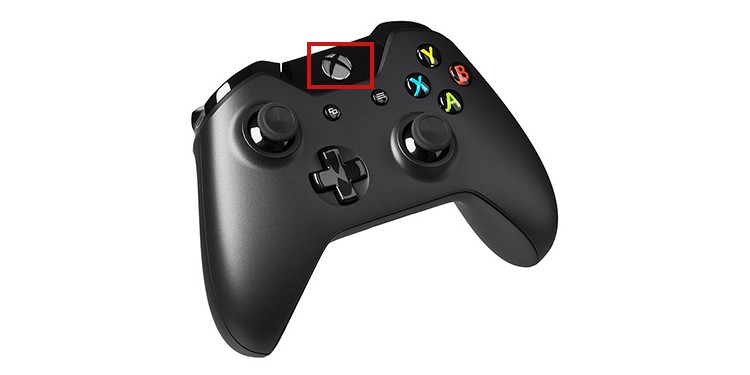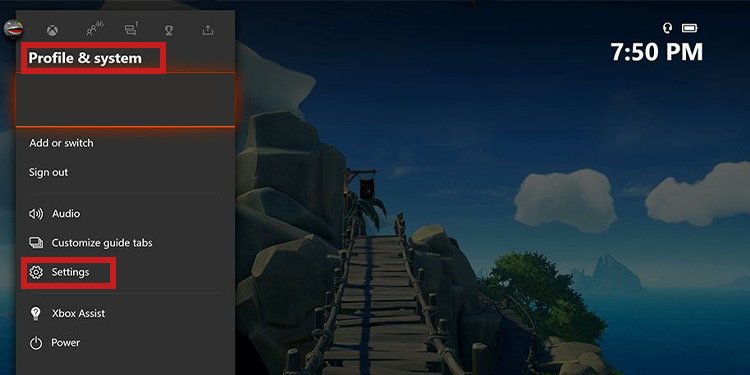Xbox resolution errors may look like wider screens, black bars on the sides, a cut-off image, and similar. If you want to avoid these issues, you’d want to make sure you’re playing with the proper screen ratio. By that,- I mean the one that matches your TV’s resolution (or the monitor or display you use to play). It’s an easy process, as the Xbox One and the Xbox Series have a built-in feature to calibrate the screen quickly. It will fix images that don’t fit on the screen and otherwise weird-looking gameplay.
Why Do I Have the Wrong Resolution on Xbox?
See, the Xbox consoles automatically detect your display’s native resolution. However, there’re rare occasions when your console doesn’t detect the resolution properly.For example, a specific error makes your Xbox One stuck in 640 x 480 resolution, even though your monitor may achieve a higher number. These are the reasons why it happens:These are the common reasons why you may be getting resolution errors on your Xbox One or Xbox Series console:
Your HDMI cable is faulty: Damaged or faulty cables may prevent your console from determining the spécs of your display. You’re using the wrong HDMI cable: Your cable doesn’t match the frame-ret and resolution you’re trying to play with. In particular, the Xbox One, Xbox One X, and Xbox Series have different HDMI requirements to match their resolutions and frame rates. The console is out of date: An outdated Xbox may be introducing random bugs causing the issue.Firmware error: A firmware issue coming from the console’s temp folder may cause the resolution desync. The auto-detect feature is not working: In most cases, a firmware inconsistency disables your Auto-Detect feature when you connect your console to a new PC. So, the console selects a resolution for you and hides the other options. For example, it may choose the lowest resolution available, which is 640 x 420 pixels.
How to Change Screen Size on Xbox One and Xbox Series?
When you play a new game on your Xbox console, it may play with black bars at the top and bottom of your screen. It will disrupt your gameplay until you adjust the screen size.The Xbox One and the Xbox Series share features, services, and interfaces. So, you can use the same built-in feature to change screen size on Xbox One and Xbox Series.However, the feature may not work for you, so we’re going to share a series of logical solutions you may try, one by one. In any case, these fixes work for both the Xbox One and the Xbox Series console families, as these share the same interfaces and firmware issues.
Set the Resolution and Refresh Rate Manually
Here’re the steps to manually set your Xbox’s resolution:Alternatively, you can select the “TV details” tab to identify your display’s native resolution and refresh rate. With the information you gather, you can select the Refresh rate by opening the drop-down menu under resolution. That said, it would be good for you to understand the resolution options you may see on the menu. You may also want to play around with your TV’s menu to identify its resolution.
720p resolution (HD): It provides a 16:9 aspect ratio with 1280 pixels wide,m and 720 pixels tall. It’s the lowest resolution on most HDTVs smaller than 72”. It’s probably the resolution of your flat screen if it’s an old model. Also, if your HDTV offers 720p and 1080i only, choose 720pp, as the other option will deliver a significant delay. 1080p (FHD): It displays a 16:9 aspect ratio with 1920 pixels wide and 1280 pixels tall. It’s the most common resolution for gaming, movies, and shows. It also supports 120Hz on Xbox consoles. 1440p (QHD): It displays a 16:9 aspect ratio with 2560 pixels wide and 1440 pixels tall. Quad HD is growing in popularity for gaming. Also, it supports a 120Hz refresh rate. 4K (UHD): It displays a 16:9 aspect ratio with 3840 pixels wide and 2160 pixels tall. Ultra HD is stunning quality, but 4K monitors are way pricier. Moreover, the resolution doesn’t support 120Hz, as the Xbox tops at 30fps/4K most of the time, although the limit is 60fps.
Ensure You Have the Proper HDMI Cable
HDMI cables and HDMI ports support different resolutions, plus a maximum of 144Hz refresh rate. Each Xbox ships with the cable it needs to work. However, if you lost it or you’re using another cable, it may cause issues. Here’s the cable you would to play on each Xbox model:
HDMI 1.4 and older: It supports up to 144Hz refresh rates on 180p resolutions. It’s the option to choose between Xbox One and Xbox One S models. Even the Xbox Series S may benefit from the cable. If you drop the resolution, like for example 720p, the refresh rate may increase. HDMI 2.0: It supports QHD (also known as 2K) at 144HZ. If you increase the resolution to 4K, the refresh rate will decrease. I recommend this model for the Xbox Series S, and the Xbox One X. HDMI 2.1: It also supports 144Hz in 4K, or up to 720Hz in 2K. If you drop to 720p, theoretically, it could support up to 1500Hz. Regardless, it’s the cable you should use for the Xbox Series S, or the Xbox Series S. Additionally, playing in 4K requires HDMI Certified Premium High Speed or HDMI High-Speed modes.
HDMI cables are backward compatible, but forward compatibility creates many issues. Also, no matter what you do, the Xbox Series, or the PS5, would hardly reach 60fps on 4K. Lastly, your cable must match the specs of your TV and the Xbox as well. So, for example, if you’re playing Xbox Series X on a 1080p TV, either cable would work. But if you’re playing Xbox One on a 4K TV, you’d have to set your TV’s resolution to 1080p and pick an HDMI 1.4 model.
Check if the Cable is Working
Similarly, you should check the state of your HDMI cable. If you see signs of damage, dust, or rust on the tip of the cable, it may not work for you.I recommend you try out the cable with other devices and see if it works properly. If it doesn’t, your best option would be to change it.Also, make sure the connection between the Xbox and the TV is safe and secure. The cable shouldn’t feel flimsy or weak.
Change the Resolution in Safe Mode
If the issue persists, you may be dealing with a random bug preventing proper functionality. So, we’re performing a power cycle and then changing the resolution with the console’s low-resolution mode. If your new resolution returns a blank screen, it means the HDMI cable is damaged, so it can’t send the full bandwidth to your TV. However, if you tried the cable with other devices and it works properly, perhaps the Xbox’s HDMI cable is faulty.
Soft Reset the Console
A random system corruption may be the culprit. This would be your cause if the console suffered an unexpected shutdown or an interruption during a firmware update. A soft reset would fix the issue. And don’t worry: it won’t erase your data, games, accounts, or anything else. Here’re the steps:After the console completes the process, go back to the resolution menu and see if you can pick the proper option. Otherwise, move on to the next solution.
Update the Console
The next step is updating the console. You can do it right after resetting the Xbox, or before. Also, you may want to power cycle the device before updating, as it makes sure no random power bugs will interrupt the process.Here’s how to manually update the console: The Xbox should update itself automatically. However, it may fail if your connection is unstable or weak.
How to Fix “That didn’t work” Error
You may be getting a “That didn’t work” error message while choosing 4K UHD on the display settings. It means the console detects a 4K TV but doesn’t support a 60Hz refresh rate. The solution, as I explained above, is selecting “TV details” on the resolution menu to identify the Hz support of the monitor.Additionally, here’re other things you can do:
Ensure your HDMI cable is plugged into the right port of the TV. Check your TV’s manual to see if it has a specific 4K HDMI portEnsure you’re using an HDMI 2.0 or 2.2 cable, rather than an older 1.4 or less. The cable that ships with the Xbox is the best option. Some AV receivers or additional video devices may not properly pass the signal to your 4K TV or console. You can try plugging the console directly into the TV and skip everything else.















